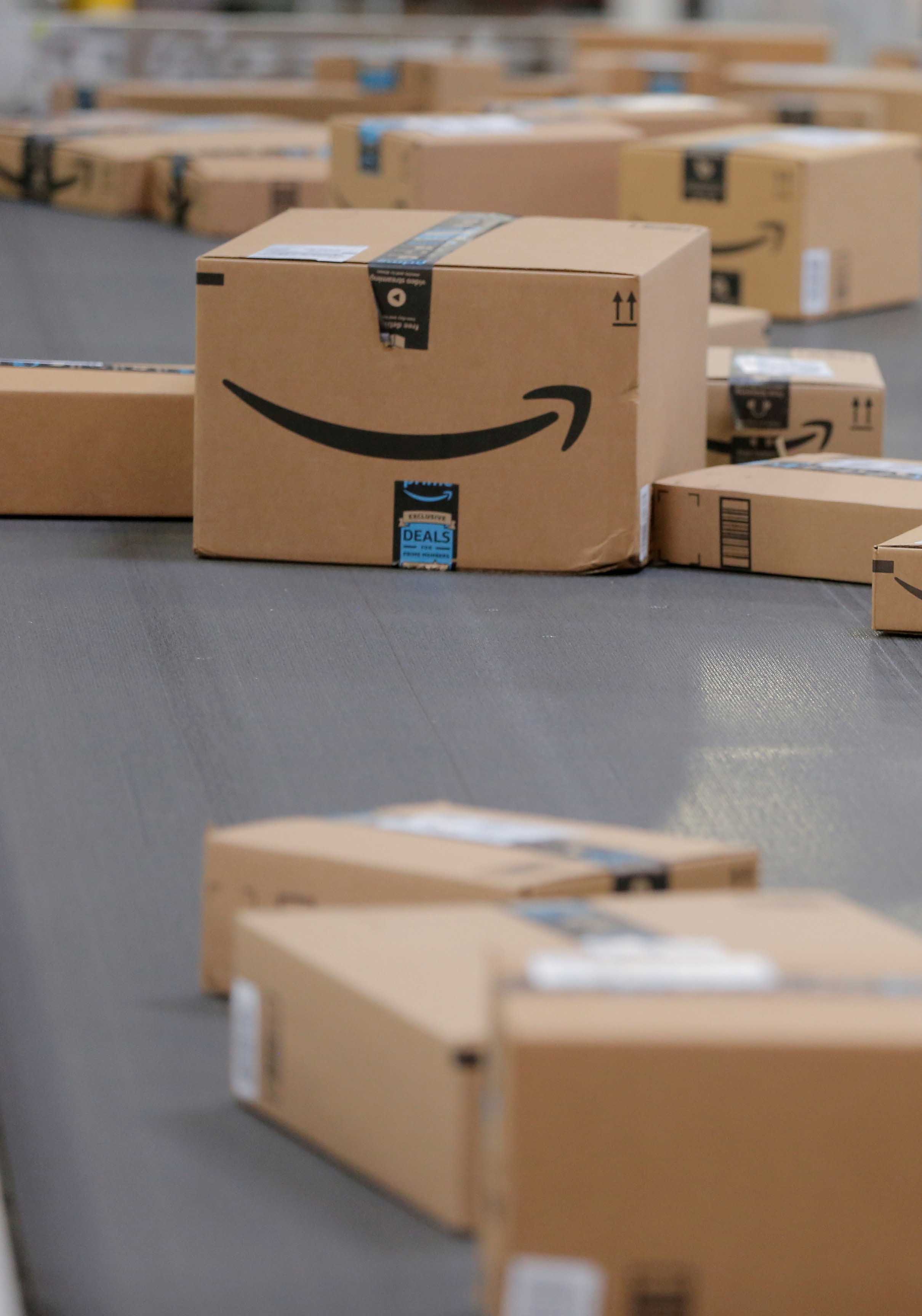The future of US equities
Will inflation halt the onward march of American stocks?


US equities have been enormously successful over the last ten years, driven in large part by the tech boom, and the widespread use of just several big tech giants.
But in recent months this performance has started to lag as fears about inflation, due to government action and consumer behaviour make an impact.
However, US stocks are not all about tech companies; there are many other areas where investors can look for returns. These articles attempt to draw out some of the issues.
Majority of advisers think US equities will perform well
Around two-thirds of advisers expect US equities to outperform relative to other global markets, according to data from the latest FTAdviser poll.
The poll, which was conducted via the FTAdviser Twitter account, asked the question: “Can US equities continue to outperform?”, with 68 per cent of respondents answering in the affirmative.
After more than a decade of low interest rates and central bank quantitative easing programmes, the thoughts of many market participants are turning to a world where rates are higher as inflation and economic growth pick up.
Such a scenario is generally viewed as a negative for US equities as proportionally fewer of the types of companies that benefit from such an expansionary economic scenario are located in the US, relative to the number of growth companies that are located in that market.
The potential shift towards value stocks has receded in recent days, as policy makers in the US have begun to communicate that interest rates may rise sooner than expected. This would be likely to moderate the rate of inflation and boost growth stocks.

Will US equities keep their relentless rise?
The data are stark. The IA North America sector has returned exactly 20 percentage points more than the IA Global sector over the past five years, while over the past decade, the outperformance is even more pronounced, with the US-focused sector having returned about 11 per cent a year more than the global composite.
But the data for 2021 year to date tell a slightly different story, with the IA Global sector marginally outperforming the US sector (24.3 per cent versus 24.1 per cent as at June 21 2021).
What has changed in 2021 is the market’s view on the outlook for global growth and inflation.
In the decade immediately following the financial crisis, markets responded to the prevailing economic conditions of low interest rates and quantitative easing, of high debt levels in the developed world and high savings rates in the faster growing emerging world, and of ageing populations.
What has changed in 2021 is the market’s view on the outlook for global growth and inflation
They decided the global economy was heading for what the US economist Larry Summers called “secular stagnation” – a period where growth and inflation remain below average for the very long term.
With this hypothesis in mind, market participants bought bonds as they anticipated yields remaining very low, and, anticipating that growth would be scarce, bought the shares of the few companies in the world that could demonstrate predictable growth.
These included fast emerging technology companies and consumer staples companies such as Proctor and Gamble that sell products for which there is constant demand.
The US equity market has got relatively more of those technology companies than any other developed market in the world, driving higher returns for that market.
Policymakers' immediate response to the pandemic was to cut interest rates further and pump more cash into the economy via quantitative easing.
These are conditions that keep bond yields low, making the income from consumer durable stocks relatively more attractive, while the low growth environment reinforced the investment case for those technology stocks that had their business models disrupted far less than their more traditional rivals.
Andrew Cole, head of multi-asset at Pictet Asset Management, says: “For sure, the US has been the market to have been invested in over the last decade. Equity investors have been eager to seek growth and have been prepared to pay higher price earnings multiples where that has been on offer. The US market, with its exposure to technology stocks and a better performing economy, has been the place to be.”
The extent to which the fate of the US equity market is tied to that of the tech sector can be seen in the fact that around 22 per cent of the market cap in the US is accounted for by just the five large tech companies known as Fangs, according to Sam Dickens of IG Group.
John Pattullo, co-head of strategic fixed income at Janus Henderson, describes the impact of the pandemic on the growth of the technology giants as “a decade of Amazonification in just a few months”, as growth that the market expected big tech companies to achieve in the years to come was brought drastically forward by the enforced online shopping habits of the pandemic.
His view is that the winners of the past decade will continue to be the winners of the future, as the pandemic has simply accelerated existing trends rather than create a new paradigm.
But in November 2020, sentiment in the wider market changed, with the secular stagnation narrative that had loomed over the market for so long receding from investors' minds as the roll-out of vaccines implied normal life could resume, while various emergency government stimulus measures continued to boost economic activity.
If growth was coming from three different directions, with consumers eager to spend their accumulated savings, government stimulus measures keeping unemployment much lower than would typically be the case at that point in a cycle, and interest rates much lower than would be the case as economies start to recover.
All of those factors point, according to Richard De Lisle, US equity manager at De Lisle Partners, to a period where inflation and growth are higher, and a rotation away from the stocks that did best over the past decade, and into businesses that do best when growth is sharply rebounding, such as consumer goods companies.
Mr Pattullo says the effect of the pandemic has been to accelerate the long-term issues of secular stagnation, so what investors can expect from here is more of the same, rather than a new cycle with different companies dominating returns.
In this scenario, US technology companies continue to benefit from the structural changes in society, while the conditions that led to secular stagnation have not gone away.
Luc Filip, head of investment at SYZ bank, is among the investors who has been altering his portfolios in response to the changed economic narrative.
It is a narrative that implies the US equity market will struggle compared with the UK and European equity markets where there are more of the economically sensitive companies that may perform well.
He says the giant US technology companies have evolved to become “core holdings” in his funds, as such companies are generally hard to find in the world, but he has also been increasing his investments in more cyclical businesses.
Filip says it is possible to find cyclical stocks listed on the US market, but one has to be “very selective”, as the range of opportunities is more limited.
But he says investors taking the view that higher inflation is necessarily negative for the biggest technology stocks may be missing the fact that Amazon, as a retailer, is the sort of company that benefits from higher economic growth, and has a strong market position, and so may be able to retain pricing power, while Google is an advertising business, and traditionally such businesses are regarded as very cyclical and therefore likely to benefit from a rise in economic activity.
Barry Norris, fund manager at Argonaut, says the difference now is that many companies will have pricing power, while for much of the past decade only the technology companies have had pricing power.
Ben Peters, who runs the Evenlode Global Equity Income fund, says he is finding the same number of opportunities in the US market now as before the shift in market sentiment, but he is now finding better opportunities among economically sensitive stocks, and fewer among the technology shares, due to both valuations and the changing economic climate.
Tim Dey, US equity fund manager at Sanlam, says that while the largest technology companies have grown very substantially in recent years, the changes to the economy that are being brought about by increased adoption of technology have a long way to go, and so technology companies can continue to grow, which justifies the higher valuations today, and the change in the market cycle does not change this.
Tom Wildgoose, head of equity investment at Nomura Asset Management, says it is notable that government bond yields have stopped rising. Bond yields rise when investors fear inflation and so sell off their fixed income investments, driving prices down and forcing bond issuers to offer higher interest rates.
Wildgoose does not find the US equity market to be generally more expensive than its peers; he says the market is in aggregate more expensive simply because more of the tech stocks, which are optically the most expensive part of the market, are listed in the US.
He has not been buying mining and oil companies, or banks, despite their obvious credentials in an environment of much higher inflation, but he says such companies lack “quality” as they generally are reliant on the performance of the wider economy, and do not have a unique selling point.
Filip is also someone who is a long-term sceptic about investing in banks, and says traditionally this part of the cycle is not a good time to own bank shares, as coming out of a recession banks are frequently faced with bad debts run up in the preceding recession.
But he says the unique nature of the pandemic-induced recession forced people to save, and so created an exit from recession that has not led to problems for bank balance sheets.
ESG perspective
Just as investors have been getting to grips with the potential for a steep change in economic growth and inflation, so too they have had to contend with the structural growth in client concerns around the sustainability of investments.
David Osfield, who runs a sustainable equity fund at EdenTree, says environmental, social and governance considerations have been stronger in Europe for a number of years, meaning the suite of available sustainable investment stocks in the US is limited, and with a small number of “darling” stocks, which are ESG-compliant and have become very expensive.
He says at present it is difficult to find stocks in the US that are both sustainable in character and trade at an attractive valuation, which he says he can find in European equity markets.
Peters says one of the issues with the US market in recent years has been the remuneration packages of chief executives, which were often linked to a metric called earnings per share, which encourages short-term behaviour from management.
But he says he is increasingly noticing this metric being abandoned and replaced by more shareholder-friendly targets, which implies better governance, the 'G' in ESG.
Cole says: “One further factor that might take some of the shine off the Fang stocks in the year ahead is the increasing importance of ESG factors to a growing proportion of investors. Governance issues exist in a number of the more highly valued areas of the market and we’ve seen these concerns damage the pricing of both public and private companies looking to IPO in recent months. Isn’t it likely, given increased ESG pressures, that it is those companies that tick the biggest ESG boxes, where investors will be happier paying increasing multiples?”





